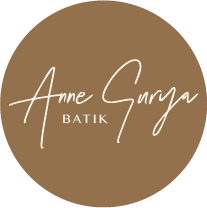Batik Indonesia
Batik is a centuries-old tradition in Indonesia which has gained recognition as a UNESCO Intangible Cultural Heritage.
Batik is an intricate, labor-intensive artform that has long been associated with women's traditional craftsmanship in many Southeast Asian cultures. The batik production process, from wax-resistant dyeing to hand-painting designs, requires significant skill and time investment. This creates economic opportunities that have empowered women in these communities.
Women have been the backbone of the batik industry, often working from home or in small, family-run workshops. This flexible, home-based work allows women to balance income-generating activities with domestic responsibilities.
It provides financial autonomy and decision-making power for women within their households. Beyond individual earnings, the batik industry has had a broader impact on local economies. Batik workshops and cottage industries generate employment for women, providing vital income streams for low-income families.
Women's earnings are often reinvested into the household, improving access to education, healthcare, and overall family welfare.
Additionally, the preservation of traditional batik techniques has allowed for the continuation of cultural heritage and artisanal craftsmanship. This has fostered community pride and identity, while also creating opportunities for cultural tourism that further supports women's economic empowerment.





